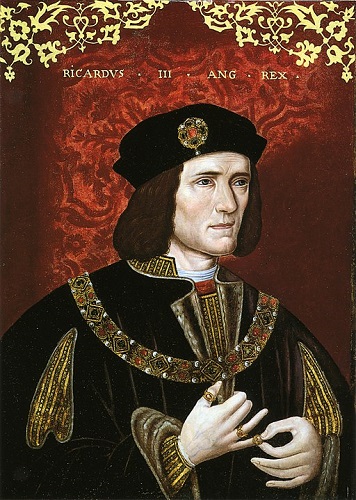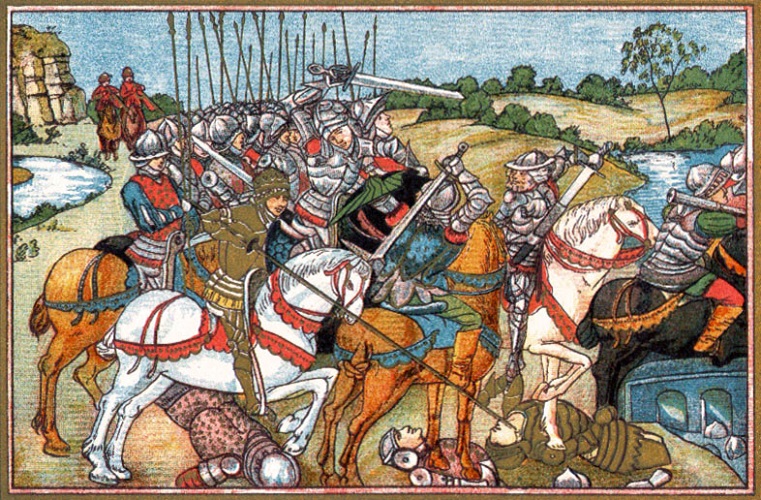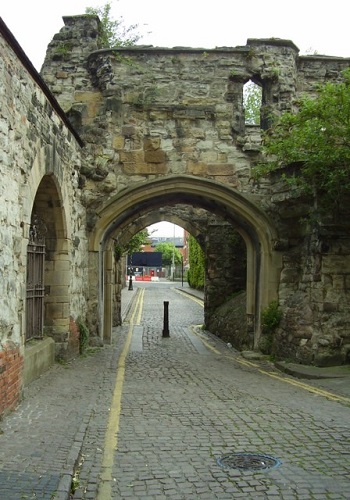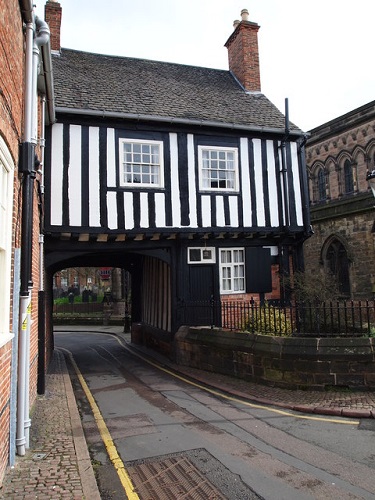Monday 28 April 2025
Yes, here comes Richard III to Leicester. No, not now – but 542 years ago!
LAHS Vice-President and Committee Member, Caroline Wessel considers some of Richard IIIs lesser known visits to Leicester.
In March 2025, there were many celebrations for the 10th anniversary of the re-interment of King Richard III at Leicester Cathedral, and to mark this special date for what has become a key visitor attraction in Leicester, it seemed a good idea to discover Richard's special connections with Leicester during his lifetime.

Of course, Leicester Castle was one of the favourite residences of monarchs at that time, because the Earls of Leicester had become the Earls then Dukes of Lancaster. When the last Duke of Lancaster, John of Gaunt, died in 1399 his son became King, and the Duchy merged with the Crown - so the monarch has been Duke of Lancaster ever since.
March 1471
In an antiquarian book on Royal Progresses to Leicester (1884) by William Kelly, we hear about the various visits Richard made to Leicester and the circumstances surrounding them. Leicester Castle was one of the favourite royal residences of the English monarchs at that time and the nineteen-year-old Richard, still only Duke of Gloucester, came to stay there in March 1471 with his elder brother, King Edward IV. This visit was when Edward was marching south from Ravenspur in Yorkshire, on his return from Flanders, where he had fled in April the previous year - so no doubt little brother Richard was delighted to see him again, safe and sound. However, the pair then marched south to London and imprisoned the de-throned Henry VI – and the next month, Richard found himself fiercely fighting with his brother on the battlefield at Barnet, with a momentous victory for them – the Yorkists.

After Richard’s accession to the throne on 26 June 1483, records show that he visited Leicester as King a number of times, each occasion being significant.
August 1483
Author William Kelly recounts that on 16 August, shortly after his succession, the King and Queen
‘accompanied by the foreign ambassadors and attended by an imposing retinue of bishops, nobles and knights, besides the Lord Chief Chancellor of England and the great officers of the court; departed from Coventry and entered Leicester in royal state, amidst – as we may justly conclude - the heartfelt acclamations and rejoicing of the townspeople, many of whom had rendered valuable services to the House of York on the battlefield.’
So, from this account we see that Leicester supported the Yorkist side in the Wars of the Roses – no doubt because their King was of the House of York. Then Kelly continues
‘Nor is it devoid of interest to notice that Piers Curteys, a favourite servant of the King, who held the office of Keeper of the Royal Wardrobe, was in all probability a native of Leicester, he having been Mayor of the town in the preceding year and was also one of its parliamentary representatives in the reigns of Edward IV, Richard III and Henry VII. He had also been attached to the Household of Edward IV, who in consideration of his good services granted him a messuage (dwelling house with grounds) situated in the High Street (now Highcross Street) near the South Gate of Leicester from 25 April 1467.’
And among the York records is a letter addressed to Curteys by Richard, asking him to send for his use ‘a great variety of clothing and banners.’

However, it was whilst in Leicester that King Richard III, for the first time, heard rumours of dissatisfaction with his government, as on the day after his arrival at Leicester Castle, he issued a mandate commanding ‘2,000 welsh bills or glaives’ to be made for him in all haste and authorising one of the officers of his household ‘to impress as many smiths’ as were requisite for the completion of the order.’ Well, a ‘glaive’ is a single-edged blade on a pole used for slashing and thrusting in battle that originated in Wales – sounds nasty! On the same day, Richard also wrote a letter in French to the Duke of Burgundy dated ‘At the Castle of Leicester’ 18 August 1483. Interesting that he was fluent in French as well as in his native tongue!
Whilst residing at Leicester Castle, Richard became aware of ‘the defection and rebellion of his trusted friend and counsellor, the wily Duke of Buckingham and he at once took measures for crushing the conspiracy which had been formed against him’. He asked the Mayor of York to ‘send as many men defensibly arrayed on horseback as ye may godly make to our town of Leicester.’ And he is recorded as reacting
‘promptly, fearlessly and resolutely’ yet to have ‘calmly resolved every auxiliary measure that might best secure to him final success; and with a singular mixture of energy and coolness, would direct military movements and issue civil processes, and this with a rapidity of thought, keen foresight, and calm deliberation, that awed his opponents and inspired confidence in his partisans’.
What an outstanding man our dear King Richard was – if of course all the above is true!

Thus, importantly was the King occupied at the Castle of Leicester when making all his arrangements for putting down the Duke of Buckingham. The measures adopted by the King were eminently successful, ‘the confederacy broke to pieces quickly, by the elements of nature contending against Buckingham, rebellion was for the first time completely crushed’, and the ‘deep revolving, witty Buckingham, was brought to the block’, meaning of course that he was executed for treason. And the Flemish aristocrat, Philippe de Commynes, stated that by the end of 1483 Richard III ‘was reigning in greater splendour than any King of England for the last hundred years’.

And our own dear King Richard III will continue to ‘reign in splendour’, at rest in Leicester Cathedral where ten years ago he was brought with all pride and dignity to be interred. So, to celebrate, why not visit the well-preserved Leicester Castle motte, accessed through Castle Gardens, a stone’s throw from the Holiday Inn and imagine Richard living there, alive, well and ‘in splendour’.
Caroline Wessel
This blog comes from an article prepared by the author for the March 2025 Leicester Cathedral Newsletter.
Richard III (1452-1485). Late 16th Century Painting, anonymous author. National Portrait Galley, (Public Domain). https://commons.wikimedia.org/wiki/File:King_Richard_III.jpg


